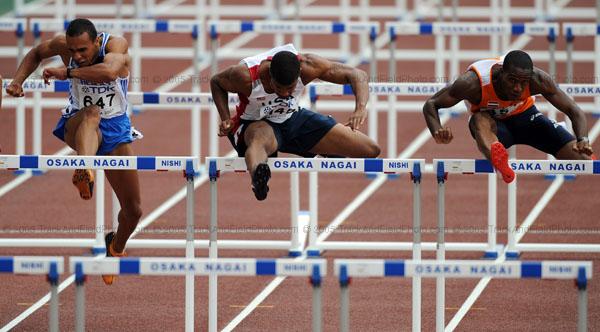I've googled "angular momentum and swimming" and it's out there. http://theraceclub.com/...tems-of-the-swimmer/
Same with angular momentum and running. And cycling. There is some information and I think there could be more if we really want to understand energy conservation and why people do better with higher/lower stroke, stride and cadence in relationship to their mass/weight.
Angular or rotational momentum conserves energy/velocity through movement in the direction you want to go.
Arms and legs in the "recovery" phase of swimming, running and cycling help us move forward. It's not just the pull or push off that propels us in the cycle of moving forward.
It's also reasonable that a bigger, more massive arm or leg "recovering" in the direction that you want to go is an advantage. A less massive arm or leg would need a higher stroke/stride or cadence to be as fast.
Not taking advantage of angular momentum by moving your arm/leg slowly during the recovery phase with the emphasis on the pull or push off to increase length is a loser. Moving the arm/leg more quickly and efficiently through the "recovery" phase helps makes us faster and the bigger that arm/leg is the better.
So what to do. If you are not massive your friends are higher rates and lift. If you are massive you have the advantage over a smaller person, especially when gravity is negligible, if you can match their stroke/cadence rate (which you probably won't have to do while swimming/cycling because of your mass).
It's not just about length/height. It seems like mass and rotational momentum are crucial too because we have the desire/agency to make our mass and turn over work for us.
Bees fly. Hummingbirds fly. Big birds flap less. Penguins swim.
Indoor Triathlete - I thought I was right, until I realized I was wrong.
Same with angular momentum and running. And cycling. There is some information and I think there could be more if we really want to understand energy conservation and why people do better with higher/lower stroke, stride and cadence in relationship to their mass/weight.
Angular or rotational momentum conserves energy/velocity through movement in the direction you want to go.
Arms and legs in the "recovery" phase of swimming, running and cycling help us move forward. It's not just the pull or push off that propels us in the cycle of moving forward.
It's also reasonable that a bigger, more massive arm or leg "recovering" in the direction that you want to go is an advantage. A less massive arm or leg would need a higher stroke/stride or cadence to be as fast.
Not taking advantage of angular momentum by moving your arm/leg slowly during the recovery phase with the emphasis on the pull or push off to increase length is a loser. Moving the arm/leg more quickly and efficiently through the "recovery" phase helps makes us faster and the bigger that arm/leg is the better.
So what to do. If you are not massive your friends are higher rates and lift. If you are massive you have the advantage over a smaller person, especially when gravity is negligible, if you can match their stroke/cadence rate (which you probably won't have to do while swimming/cycling because of your mass).
It's not just about length/height. It seems like mass and rotational momentum are crucial too because we have the desire/agency to make our mass and turn over work for us.
Bees fly. Hummingbirds fly. Big birds flap less. Penguins swim.
Indoor Triathlete - I thought I was right, until I realized I was wrong.
